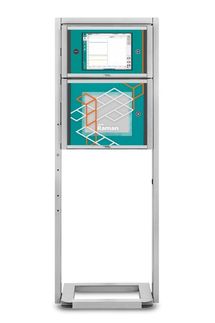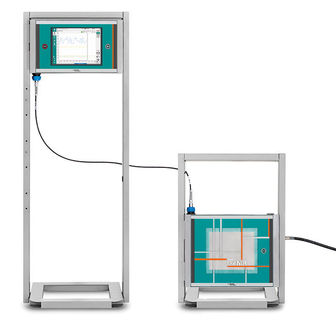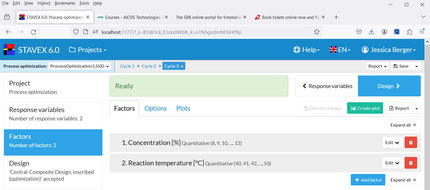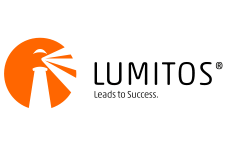|
|
| Mitomycin
|
| Systematic (IUPAC) name
|
| 6-Amino-1,1a,2,8,8a,8b-hexahydro-8- (hydroxymethyl)- 8a-methoxy-5-methyl-azirino[2', 3':3,4] pyrrolo[1,2-a]indole-4,7-dione carbamate (ester)
|
| Identifiers
|
| CAS number
| 50-07-7
|
| ATC code
| L01DC03
|
| PubChem
| 5746
|
| DrugBank
| APRD00284
|
| Chemical data
|
| Formula | C15H18N4O5
|
| Mol. mass | 334.327 g/mol
|
| Pharmacokinetic data
|
| Bioavailability | ?
|
| Metabolism | Hepatic
|
| Half life | 8-48 min
|
| Excretion | ?
|
| Therapeutic considerations
|
| Pregnancy cat.
|
D (Au, U.S.)
|
| Legal status
|
℞-only (U.S.), POM (UK)
|
| Routes
| [Intravenous therapy
|
The mitomycins are a family of aziridine-containing natural products isolated from Streptomyces lavendulae. One of these compounds, mitomycin C, finds use as a chemotherapeutic agent by virtue of its antitumour antibiotic activity. It is given intravenously to treat upper gastro-intestinal (e.g. esophageal carcinoma) and breast cancers, as well as by bladder instillation for superficial bladder tumours. It causes delayed bone marrow toxicity and therefore it is usually administered at 6-weekly intervals. Prolonged use may result in permanent bone-marrow damage. It may also cause lung fibrosis and renal damage.
Mechanism of Action
Mitomycin C is a potent DNA crosslinker. A single crosslink per genome has shown to be effective in killing bacteria. This is accomplished by reductive activation, followed, by two N-alkylations. Both alkylations are sequence specific for a guanine nucleoside in the sequence 5'-CpG-3'.[1]
Biosynthesis
In general the biosynthesis of all mitomycins [2] proceed via combination of 3-amino-5-hydroxybenzoic acid (AHBA), D-glucosamine, and carbamoyl phosphate, to form the mitosane core, followed by specific tailoring steps. The key intermediate, AHBA, is a common precursor to other anticancer drugs, such as rifamycin and ansamycin.
Specifically, the biosynthesis begins with the addition of phosphoenolpyruvate (PEP) to erythrose-4-phosphate (E4P) with a yet undiscovered enzyme, which is then ammoniated to give 4-amino-3-deoxy-D-arabino heptulosonic acid-7-phosphate (aminoDHAP). Next, DHQ synthase catalyzes a ring closure to give 4-amino3-dehydroquinate (aminoDHQ), which is then undergoes a double oxidation via aminoDHQ dehydratase to give 4-amino-dehydroshikimate (aminoDHS). The key intermediate, 3-amino-5-hydroxybenzoic acid (AHBA), is made via aromatization by AHBA synthase.
Synthesis of the key intermediate, 3-amino-5-hydroxy-benzoic acid.
The mitosane core is synthesized as shown below via condensation of AHBA and D-glucosamine, although no specific enzyme has been characterized that mediates this transformation. Once this condensation has occurred, the mitosane core is tailored by a variety of enzymes. Unfortunately, both the sequence and the identity of these steps are yet to be determined.
- Complete reduction of C-6 - Likely via F420-dependent tetrahydromethanopterin (H4MPT)) reductase and H4MPT:CoM methyltransferase
- Hydroxylation of C-5, C-7 (followed by transamination), and C-9a. - Likely via cytochrome P450 monooxygenase or benzoate hydroxylase
- O-Methylation at C-9a - Likely via SAM dependent methyltransferase
- Oxidation at C-5 and C8 - Unknown
- Intramolecular amination to form aziridine - Unknown
- Carbamoylation at C-10 - Carbamoyl transferrase, with carbamoyl phosphate (C4P) being derived from L-citrulline or L-arginine
Formation of mitosane core followed by tailoring specific to Mitomycin C.
References
- ^ Tomasz, Maria (September 1995). "Mitomycin C: small, fast and deadly (but very selective).". Chemistry and Biology 2 (9): 575-579.
- ^ Mao Y.; Varoglu M.; Sherman D.H. (April 1999). "Molecular characterization and analysis of the biosynthetic gene cluster for the antitumor antibiotic mitomycin C from Streptomyces Iavendulae NRRL 2564.". Chemistry and Biology 6 (4): 251-263.
- Hata, T.; Sano, Y.; Sugawara, R.; Matsumae, A.; Kanamori, K.; Shima, T.; Hoshi, T. J. Antibiot. Ser. A 1956, 9, 141-146.
- Fukuyama, T.; Yang, L. "Total Synthesis of (±)-Mitomycins via Isomitomycin A." J. Am. Chem. Soc. 1987, 109, 7881-7882.
- Mao, Y.; Varoglu, M.; Sherman, D.H. "Molecular characterization and analysis of the biosynthetic cluster for the antitumor antibiotic mitomycin C from Streptomyces lavendulae NRRL 2564." Chemistry & Biology 1999, 6, 251-263.
- Varoglu, M.; Mao, Y.; Sherman, D.H. "Mapping the Biosynthetic Pathway by Functional Analysis of the MitM Aziridine N-Methyltransferase." J. Am. Chem. Soc. 2001, 123, 6712-6713 and references therein.
| Chemotherapeutic agents/Antineoplastic agents (L01) |
|---|
| Alkylating and alkylating-like agents | Nitrogen mustards: (Chlorambucil, Chlormethine, Cyclophosphamide, Ifosfamide, Melphalan). Nitrosoureas:(Carmustine, Fotemustine, Lomustine, Streptozocin). Platinum (alkylating-like): (Carboplatin, Cisplatin, Oxaliplatin, BBR3464). Busulfan, Dacarbazine, Procarbazine, Temozolomide, ThioTEPA, Uramustine |
|---|
| Antimetabolites | Folic acid: (Aminopterin, Methotrexate, Pemetrexed, Raltitrexed). Purine:(Cladribine, Clofarabine, Fludarabine, Mercaptopurine, Pentostatin, Thioguanine). Pyrimidine:(Capecitabine, Cytarabine, Fluorouracil, Floxuridine, Gemcitabine) |
|---|
| Spindle poison/mitotic inhibitor | Taxane: (Docetaxel, Paclitaxel). Vinca: (Vinblastine, Vincristine, Vindesine, Vinorelbine). |
|---|
| Cytotoxic/antitumor antibiotics | Anthracycline family: (Daunorubicin, Doxorubicin, Epirubicin, Idarubicin, Mitoxantrone, Valrubicin) - streptomyces (Actinomycin, Bleomycin, Mitomycin, Plicamycin) - Hydroxyurea |
|---|
| Topoisomerase inhibitors | Camptotheca: (Camptothecin, Topotecan, Irinotecan), Podophyllum:(Etoposide, Teniposide) |
|---|
| CI monoclonal antibodies | Receptor tyrosine kinase (Cetuximab, Panitumumab, Trastuzumab) - CD20 (Rituximab, Tositumomab) - other (Alemtuzumab, Bevacizumab, Gemtuzumab) |
|---|
| Photosensitizers | Aminolevulinic acid, Methyl aminolevulinate, Porfimer sodium, Verteporfin |
|---|
| Tyrosine kinase inhibitors | Dasatinib, Erlotinib, Gefitinib, Imatinib, Lapatinib, Nilotinib, Sorafenib, Sunitinib |
|---|
| Other | retinoids (Alitretinoin, Tretinoin) - Altretamine, Amsacrine, Anagrelide, Arsenic trioxide, Asparaginase (Pegaspargase), Bexarotene, Bortezomib, Denileukin diftitox, Estramustine, Ixabepilone, Masoprocol, Mitotane |
|---|
|







